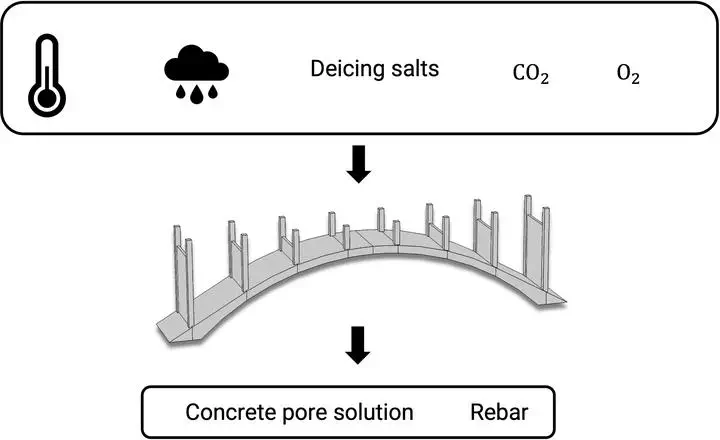Corrosion Prediction with 3D Model Utilizing Meteorological Data and Properties of Site-extracted Rebar and Concrete

Abstract
In this research, the corrosion of rebar in an existing arch bridge section was modelled. Historical environmental and exposure conditions were used to determine the moisture content, chloride ion concentration and carbonation in the concrete. Then the corrosion rate was calculated by correlating measured pore solution composition of cored concrete with electrochemical corrosion measurements of extracted rebar. The simulation results for the past 100 years of service correlate very nicely with the current condition of the arch, where the greatest amount of corrosion was predicted to occur on the upper layer of longitudinal rebars in the vicinity of the most exposed side of the arch, and the highest corrosion damage (0.1—0.2 mm thickness loss) was found on that rebar near the columns. The rebars in vertical columns and arch sheltered areas have an insignificant corrosion damage due to limited exposure to moisture. It is concluded that a combination of carbonation and chloride ingress accelerates corrosion rates of the rebar. Ineffective sheltering from the rain or more rain water retention on the arch facilitates this penetration and leads to higher corrosion rates.